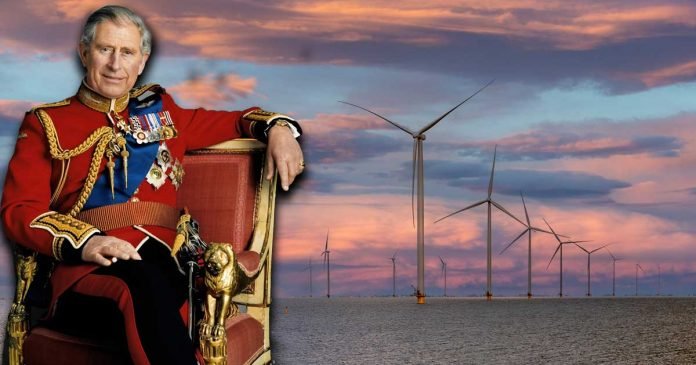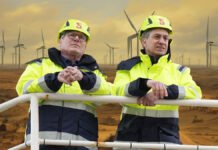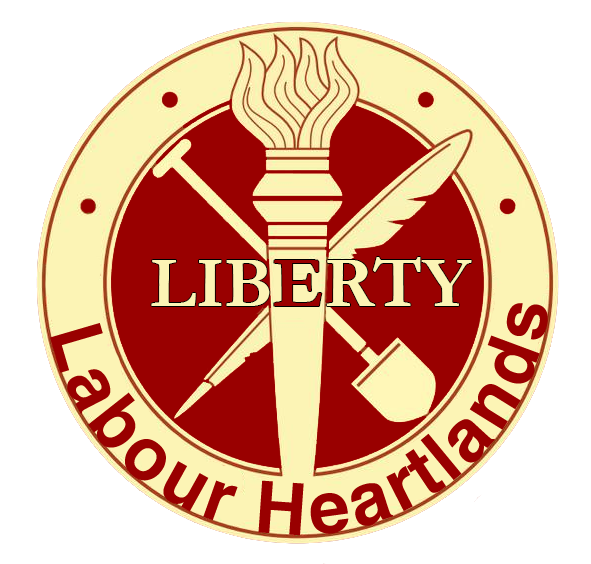As the argument rages over windfarms we look behind the rhetoric and see who really benefits.
Downing Street appears likely to allow new onshore wind projects in England after years of an effective ban, Grant Shapps has indicated, with ministers giving way in the face of a growing backbench Conservative rebellion.
This government U-turned over its ban on onshore wind by saying turbines could be installed if the projects gain the support of local communities.
The Department for Levelling Up has launched a consultation to explore how councils can “demonstrate local support and respond to views of their communities when considering onshore wind development in England”.
And if local people agree to having windfarms in their area, they could end up with lower energy bills too.
They claim wind farms are blighting the countryside while failing to deliver a reliable supply of electricity despite the cost.
Onshore windfarms were effectively barred under the leadership of David Cameron when he excluded them from the government’s green energy subsidies. And for good reason too.
With controversy over onshore wind farms growing, the role of the landed establishment in fuelling the ‘scramble for wind’ will alarm opponents.
Onshore windfarms had become a cash cow for wealthy landowners who would receive huge subsidies for allowing turbines to be mounted on their land, irrespective of what locals thought. The ban on onshore windfarms came after public cries of “not on my doorstep!” However, the historic cronyism and large bungs for wealthy landowners also played a part.
The lifting of the moratorium on inshore wind will delight the Tory landowning interest, who stand to make fat sums from licenses to have turbines built on their land.

It wasn’t so long ago the media uproar over those wealthy landowners receiving millions in subsidies for allowing wind farms to be placed on their land.
The same Newspapers that are now promoting onshore windfarms such as the Guardian once cried a different tune pointing out: “The boom in onshore wind power, likened to a “new industrial revolution”, is being dominated by a small number of private landowners who will share around £1bn in rental fees over the next eight years”.
Rental payments vary and are secret but, say property agents speaking in confidence to the Guardian, landowners can now expect £40,000 a year “risk-free” for each large turbine erected on their land. Those set to benefit include senior members of the royal family and the Forestry Commission in Wales and Scotland.
Analysis of onshore wind power investments suggests that the 13GW of energy anticipated by the government to be installed by 2020 will pay landowners upwards of £100m a year in total rents, which was on top of the EU farm subsidies they automatically receive for owning land before we left the EU on January first 2020.
According to agents in Scotland and Wales, competition for suitable land is escalating rents. Landowners can expect to be paid 5-6% of the annual turnover of windfarms, or around £40,000 a year for each large 3MW turbine. “They see windfarms as a new farm subsidy but they do not have to take any risk,” said one agent. “Only 60% of development applications may go through, but the returns if they do get built are enormous.”
In return, landowners are offering communities around £1,000 per MW installed, according to RenewableUK, the wind industry trade body, in compensation for what some consider visual pollution and other disturbances such as lack of access.
So far, 4.5GW of onshore wind power has been installed in Britain, with a further 8.5GW in the planning system or expected to be built in the next seven years.
Estate owners in Scotland – where 1,200 people own two-thirds of the land – have so far benefited the most. The Earl of Moray is thought to get about £2m a year in rent from a 49-turbine windfarm on his Doune estate in Perthshire, while the Duke of Roxburghe stands to make more than £1.5m a year from his 48-turbine Fallago Rig development in Lammermuir Hills.
One such land owner was the disgraced former Tory prime minister David Cameron’s father-in-law, Sir Reginald has been eighth baronet of Normanby who took advantage of his inherited wealth by having two wind farms subsidising his vast income.
The irony is it was David Cameron’s government that effectively stopped onshore wind farms licences doesn’t go amiss, especially in light of his recent revelations and willingness to put cronyism before the people. However, way back in 2015 onshore wind turbines became an extremely controversial subject for Cameron and the Tory Party.
The fact is after the ban on onshore windfarms is lifted the subsidies for turbines will be reintroduced and a lot of very wealthy people will reap the benefits from the public purse when the alternative offshore windfarms fill the public purse, here’s how…
Windfarms double the king’s coffers.

From zero capacity at the turn of the millennium, the UK is now home to one of the largest operating offshore wind sector in the world.
The alternative offshore windfarms, have been running extremely well with energy companies leasing huge swathes of the sea bed, again there is always something in it for someone, however this time the public purse reaps the benefits too.
The King’s ownership of the British coastline is as old as the monarchy itself. But his right to collect royalties from wind and wave power is much more recent: it was granted by Tony Blair’s Labour government in a 2004 act of parliament.
The story of how King Charles’s mother, Queen Elizabeth II was given the rights to exploit this renewable energy source has its roots in the North Sea oil boom of the last century.
Until the 1960s there was no legislation declaring crown ownership below the low-water mark. Sovereignty was by convention.
A decade after her coronation, the question of how far the domain should extend was being raised by the monarch herself. Following an audience with Queen Elizabeth in 1962, the Earl of Perth, the first commissioner of the Crown Estate, reported that “she had seen something about the Crown Estate taking over rights on land under the sea”.
The discovery of North Sea oil and gas was a catalyst, with drilling companies demanding clarity of ownership. In 1964, the Continental Shelf Act set the much wider boundary that remains in place today.
The ownership of oil and gas on land and at sea rests with the crown, but since 1934 the job of exploiting it, by setting royalties and assigning drilling rights, has rested with the government.
Wind power is different. From the first round in 2000, leasing was managed by the Crown Estate.
In 2002, government lawyers suggested using a UN convention to create an “exclusive economic zone” for wind and wave power within the continental shelf boundary. A green paper asked for views on “the most appropriate body” in which to vest management of this new zone. By 2004, when the Energy Act was passed during Blair’s premiership, the decision had been made. Exploitation rights would remain with the crown.
This gave royal maritime domain extending over the continental shelf, a zone up to 200 metres deep around the British Isles. To the east, the limit lies halfway across the North Sea to the Netherlands and Belgium, and to the west, halfway across the Irish sea.
It is the ‘The Crown Estate, which manages the royal property portfolio, and that body last year held the first auction of seabed plots for windfarm turbines in a decade. An auction that brought bidding to record highs as energy firms look to diversify away from oil.
The King’s property manager and Treasury to get windfarm windfall of nearly £9bn
The crown estate’s first auction of its seabed licences in a decade will earn the King’s property manager £879m a year, for up to 10 years, and clear the way for six new offshore windfarms and enough clean electricity generation for more than 7m homes.
Under current rules, the crown estate hands its profits to the Treasury before 25% is returned to the royal household in the form of the sovereign grant – a funding formula that is due to be reviewed next year.
The existing arrangements would more than double the profits made by the King and the Treasury from the crown estate, which reported profits of £345m for the 2021 financial year.
The Treasury would also be in line for up to £659m a year from the offshore wind farms lease after handing the King a share worth close to £220m a year to run the official royal household and pay for repairs to Buckingham Palace.
The sum payable to the royal household would be well above the £86m grant in the current financial year – and lead to payments of up to £2bn over 10 years – unless the Treasury decides to adjust the rules next year.
The sovereign grant was increased in 2017, from its previous level of 15%, to pay for extensive renovations at Buckingham Palace which are likely to run until 2027. It will stay at 25% at least.
The point is the public purse also receives 75 percent of the leasing revenue.
If windfarm-supporting Tories are hoping that onshore turbines will help solve the energy crisis they will be disappointed in that, too. The idea that onshore wind is the cheapest form of energy only holds if you ignore the cost of coping with the intermittency of wind power. Britain already has enough wind and solar power — theoretically — to meet the average 38 GW UK demand for power. Yet on a calm night last week the contribution of wind and solar fell to less than two per cent. We have a tiny capacity for energy storage — equivalent to less than an hour’s national consumption.
Support Independent Journalism Today
Our unwavering dedication is to provide you with unbiased news, diverse perspectives, and insightful opinions. We're on a mission to ensure that those in positions of power are held accountable for their actions, but we can't do it alone. Labour Heartlands is primarily funded by me, Paul Knaggs, and by the generous contributions of readers like you. Your donations keep us going and help us uphold the principles of independent journalism. Join us in our quest for truth, transparency, and accountability – donate today and be a part of our mission!
Like everyone else, we're facing challenges, and we need your help to stay online and continue providing crucial journalism. Every contribution, no matter how small, goes a long way in helping us thrive. By becoming one of our donors, you become a vital part of our mission to uncover the truth and uphold the values of democracy.
While we maintain our independence from political affiliations, we stand united against corruption, injustice, and the erosion of free speech, truth, and democracy. We believe in the power of accurate information in a democracy, and we consider facts non-negotiable.
Your support, no matter the amount, can make a significant impact. Together, we can make a difference and continue our journey toward a more informed and just society.
Thank you for supporting Labour Heartlands












